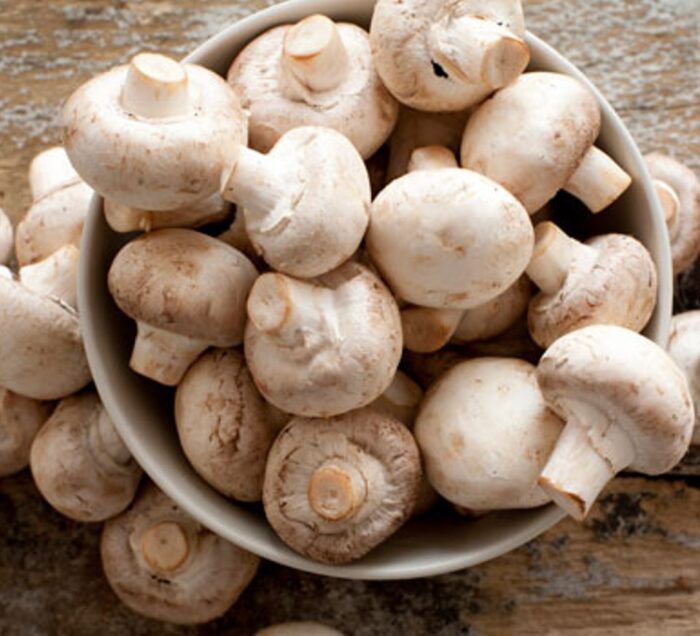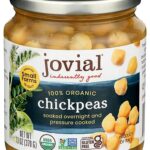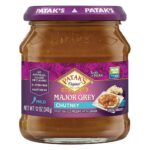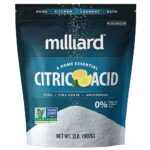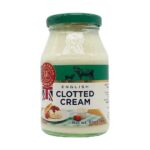There are over 50000 species of mushrooms in the world today. While there’s a bit of confusion between which species are edible only around 25 of the known mushroom species are poisonous. The small number of mushroom species that are eaten regularly, around 20, owe it to their taste and flavour rather than the others being non-edible. The complicated fungi fruit are versatile and can be showcased in salads, baked, fried, grilled and in soups and stews. Mushrooms are notorious for their delicate qualities and not keeping for long. If you want to get the best shelf life from mushrooms read on.
Contents
Mushrooms
What we call mushrooms are complex. They are the fruit of macrofungal plants. Macro because they are fungi big enough to be seen with the naked eye. There are two main types of fungus, based on how they grow. Epigeous mushrooms grow above the ground and you can think of examples such as button and oyster mushrooms in this regard. Hypogeous mushrooms grow below the ground and a good example are truffles. Mushrooms have both culinary and medicinal purposes which are well documented in history. Mushrooms are harvested from the wild as well as commercially grown with the wild ones being more pricey particularly where they are rare. Mushrooms are low calorie and contain D vitamins. They have delicate flesh and react to both high and low temperature. So what are the best ways of storing mushrooms to extend their shelf life? Before answering that outright there are a few tips you will need to observe when buying and transporting mushrooms to make sure you get the best shelf life out of them.
When Buying Mushrooms
You can save yourself a lot of trouble when it comes storing mushrooms if you get a few things right when buying your mushrooms. Five tips will help help you start your mushroom journey right. The first tip is to pick out the best-looking mushrooms. Sounds simple enough but is not always easy. Avoid any mushrooms that look bruised or limp. Secondly, if you are buying pre-packed mushrooms then make sure you buy them whole and not the sliced ones as they will deteriorate quicker. The third tip is to purchase your mushrooms as close to the source as possible if it can be helped. The time it takes to move mushrooms from a grower or forager to a packer, to a distributor and finally to the store will impact the remaining shelf life of your mushrooms. The fourth tip is to not wash your mushrooms before storing them. It is best to wash your mushrooms just before using them. Finally, when packing mushrooms you want them in a container in which they can breathe. Brown paper bags are really good for this. If your mushrooms are wrapped in plastic making small holes with a toothpick is enough.
How To Store Mushrooms In The Fridge
As many already know you can store mushrooms in the refrigerator but you may have been doing it wrong all along. Most would want to store mushrooms in the crisper as it is the coldest part of the fridge and perfect for vegetables and fresh produce but with mushrooms, it isn’t the best place. The crisper happens to be a moisture haven which is not good for storing mushrooms. The crisper also tends to store other foods that may have strong odours such as onions and this can affect your mushrooms as they take on the odour. You also want to avoid placing anything on top of mushrooms as they are very delicate foods. As we have already outlined it is very important to make sure your mushrooms are in breathable packaging. Brown paper bags are the best. If they are in punnets and cling wrap you can take a toothpick to make holes in the plastic wrap. You can also wrap your mushrooms in paper towels then place in a plastic bag which you must leave open. You can expect your mushrooms to keep for a week in this storage method.
How To Freeze Mushrooms
If you want to keep your mushrooms for longer than a week then you should consider freezing. It’s not that simple, mushrooms don’t freeze well in their natural state so to freeze your mushrooms you will have to cook them by sauteeing. The cooking will stop the enzyme action that causes them to deteriorate rapidly as they do. Lightly sautee your mushrooms adding flavour if you intend to use them flavoured or plain if you’re not sure how you will use them. Once sauteed you can store them in freezer bags or vacuum seal them for best results. Once frozen your mushrooms will keep indefinitely. It is best to use them within 3 months from a quality perspective.Use heavy-duty packaging to prevent freezer burn in your mushrooms.
How To Dry Mushrooms
There is another option for storing mushrooms long term which may appeal to you. Drying mushrooms. You can expect to keep dried mushrooms for between 6 and 12 months. The best part is you can easily reconstitute dried mushrooms by rehydrating them. To dry mushrooms you can use a food dehydrator or a low-temperature oven. Once dried you can store in vacuum-sealed plastic or ordinary plastic bags. To reconstitute your mushrooms place them in a bowl and cover with warm water. Allow 15 to 20 minutes for the mushrooms to soak up the water. The bonus with this is you can substitute the water with stock or wine if your recipe includes these or you just desire a bit more flavour.
You can store mushrooms in three ways successfully. Storing in the fridge in a breathable packaging will give you around a week. You can sautee and freeze mushrooms which you can use within 3 months of freezing. Drying mushrooms will give you 6 to 12 months of storage.
